Key Takeaways:
- Understanding the functionality of dog wheelchairs and their design to accommodate bathroom needs.
- Learning the techniques pet parents can use to assist their wheelchair-bound dogs during bathroom breaks.
- Recognizing the importance of selecting the right wheelchair to ensure the comfort and hygiene of paralyzed pets.
Caring for a paralyzed dog comes with its unique set of challenges, one of which is ensuring that the dog can still perform its bodily functions with dignity and ease. Dog wheelchairs are a boon for pets with mobility issues, but many pet parents wonder: how does a dog go to the bathroom in a dog wheelchair? This article will delve into the mechanics of dog wheelchairs, the adaptability of most dogs, and the support systems in place to aid pets with special needs.
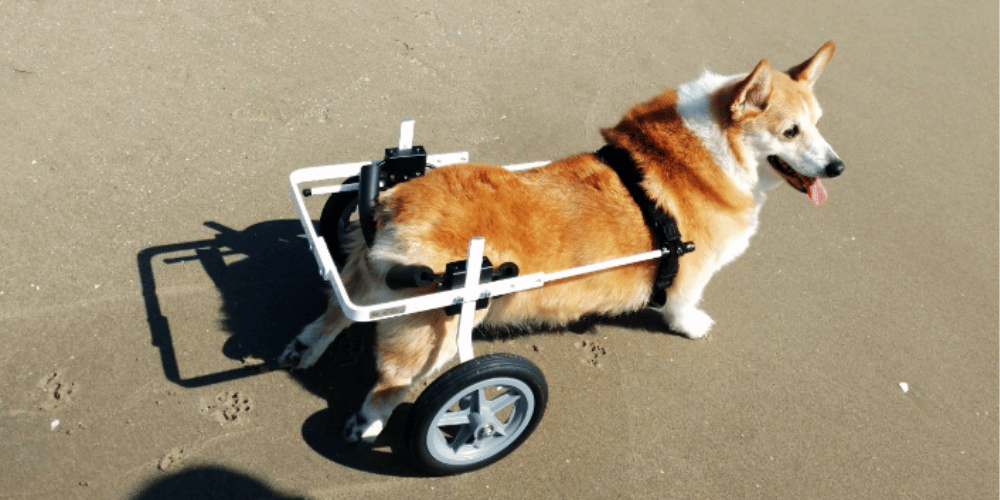
The Design of Dog Wheelchairs
Dog wheelchairs are specifically designed to support pets with mobility problems. Whether a dog has weakened limbs due to conditions like hip dysplasia or a traumatic injury, a wheelchair can restore a sense of freedom. These devices are fully adjustable to fit a dog's body and are crafted to allow dogs to pee and poop without obstruction. The rear legs, if paralyzed, are often supported by leg rings or slings, which keep the ground missing from beneath them while still providing enough space for them to relieve themselves.
Adapting to a New Cart
When a pet first starts using a wheelchair, there is a period of adjustment. Most pets, including dogs and sometimes even cats, can adapt to a new cart with the right training and positive experience. Pet parents play a crucial role in this transition, offering support and encouragement. It's important to allow the animal to get comfortable with the feel of the cart, learn to control it, and understand that they can still play, walk, and yes, even go to the bathroom while in it.
Assisting with Bathroom Breaks
For a paralyzed dog, the ability to stand upright in a wheelchair is a significant aid in performing a bowel movement. However, some dogs may require additional help from their pet parents. The towel test, where a towel is used to lift and support a dog's hindquarters, can be a helpful training step before transitioning to a wheelchair. Once in the wheelchair, pet parents may still need to assist by gently lifting the back bar of the wheelchair to encourage a natural position for both pee and poop.
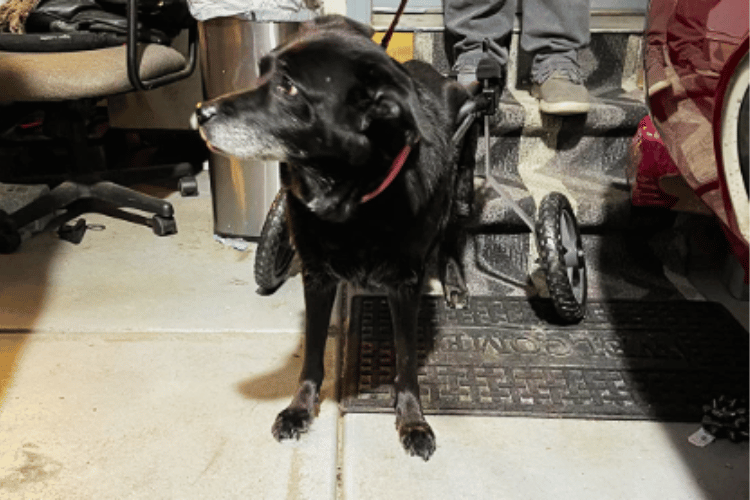
Hygiene and Wheelchair Dogs
Hygiene is a top concern for wheelchair dogs, especially during bathroom breaks. Wheelchairs are designed with materials that are easy to clean and maintain. For a female dog, it's crucial to ensure that the wheelchair does not catch it all, meaning that urine and feces are not trapped against the dog's body. Regular cleaning of the wheelchair and the dog's body is necessary to prevent infections and maintain overall health.
Choosing the Right Wheelchair
Selecting the right wheelchair is vital for a paralyzed pet's comfort and functionality. A fully adjustable wheelchair ensures that it can be tailored to the dog's specific body shape and size. This customization is essential for allowing the dog to pee and poop without difficulty. The wheelchair should have a long tail clearance and a back bar that does not impede the dog's ability to squat or lift its tail.
Customizing Wheelchair for Your Dog's Needs
When it comes to ensuring that a wheelchair dog can comfortably go about their daily activities, customization is key. Wheelchairs like the Walkin' Wheels wheelchair are designed to fit the unique body of each dog, taking into account their size, weight, and specific mobility issues. This customization ensures that dogs can pee and poop without discomfort, and that the wheelchair supports their body adequately during these times. It's important to work with manufacturers or specialists who understand the nuances of a dog's body and can recommend the appropriate adjustments for optimal comfort and functionality.
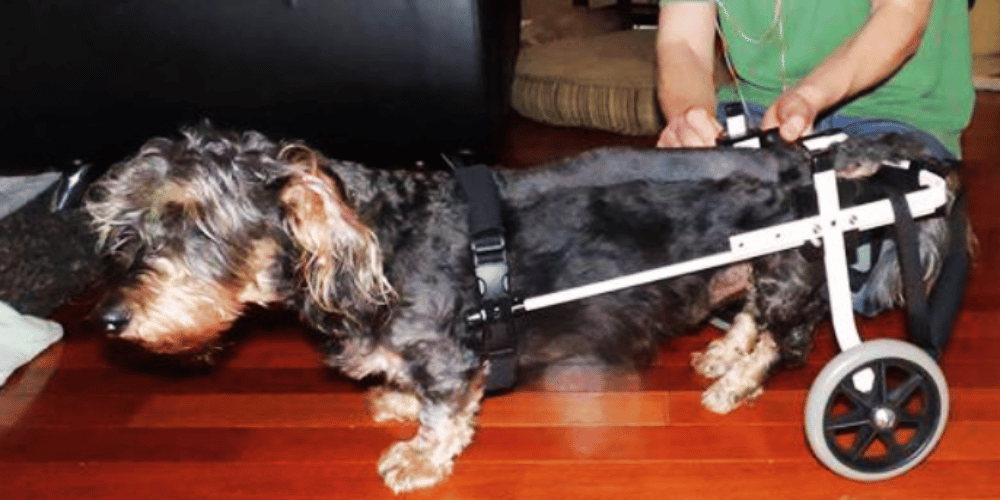
Moreover, a well-fitted wheelchair can significantly improve a dog's quality of life. It allows them to lie down, rest, and engage with other pets and their environment more naturally. When a dog's wheelchair is tailored to their needs, it minimizes the risk of additional strain on their body, which can occur if the fit is incorrect. This attention to detail ensures that the dog can maintain an active lifestyle, which is crucial for their overall health and well-being. Customization, therefore, is not just about comfort; it's about enhancing a dog's ability to live life to the fullest.
Training Your Dog for Wheelchair Use
When introducing your dog to a Walkin' Wheels wheelchair, patience and positive reinforcement are key. Initially, your dog may be hesitant to move around or even dogs pee while strapped in. Start by allowing your dog to lie next to the wheelchair, offering treats and praise to create positive associations. Gradually, help your dog into the wheelchair, securing them comfortably. Encourage movement with their favorite toys or treats, ensuring that the wheelchair supports the dog's body correctly. This gradual introduction helps your dog adapt without feeling overwhelmed.
As your dog becomes more accustomed to their new mobility aid, they will start to explore their environment with greater confidence. It's important to supervise these early explorations to ensure safety and to assist if your dog needs to relieve themselves. Some dogs may instinctively know how to dogs pee and defecate while in the wheelchair, while others may require gentle guidance. Use a leash to guide your dog to their usual bathroom spots, and reward them when they successfully go to the bathroom. This will reinforce the behavior, making it a routine part of their day.
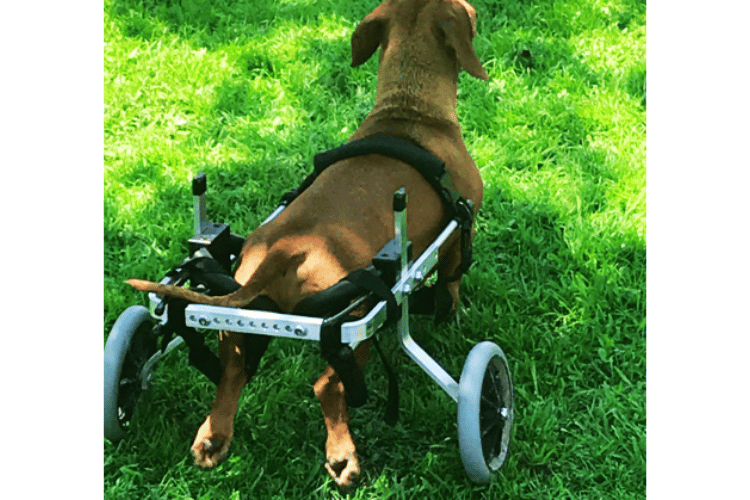
Socializing and Playtime in a Dog Wheelchair
Socializing with Other Dogs
When a dog is fitted with a walkin wheels wheelchair, pet parents might wonder how their furry friend will interact with other dogs. The good news is that wheelchairs often don't hinder socialization. In fact, dogs are incredibly adaptable and can still engage in playful banter and sniff greetings with their peers. The wheelchair simply becomes a part of the dog's body language, and most dogs will not be deterred by it. It's heartwarming to see how canine companions adjust their play to accommodate a friend in a wheelchair, ensuring that the dog's quality of life remains high.
Playtime Adaptations
Playtime is crucial for a dog's mental and physical well-being, and a wheelchair shouldn't stop the fun. Owners can encourage their dogs to play fetch or tug-of-war while in their walkin wheels wheelchair. These activities help maintain muscle strength and morale. It's important to monitor the dog's body language for signs of fatigue or discomfort, but with the right adjustments, playtime can still be a joyous and regular part of their routine. This not only enhances the dog's quality of life but also reinforces the bond between pet and owner.
Nutrition and Weight Management for Wheelchair-Bound Dogs
Importance of a Balanced Diet
For dogs using a wheelchair, maintaining an optimal weight is crucial for their overall health and mobility. A balanced diet ensures that the dog's body receives the necessary nutrients without the excess calories that can lead to weight gain. Excess weight can put additional strain on a dog's body, especially on any limbs that are still mobile, and can complicate the use of a wheelchair. Pet owners should work closely with their veterinarians to tailor a diet plan that supports their dog's specific needs, keeping them as healthy and mobile as possible.
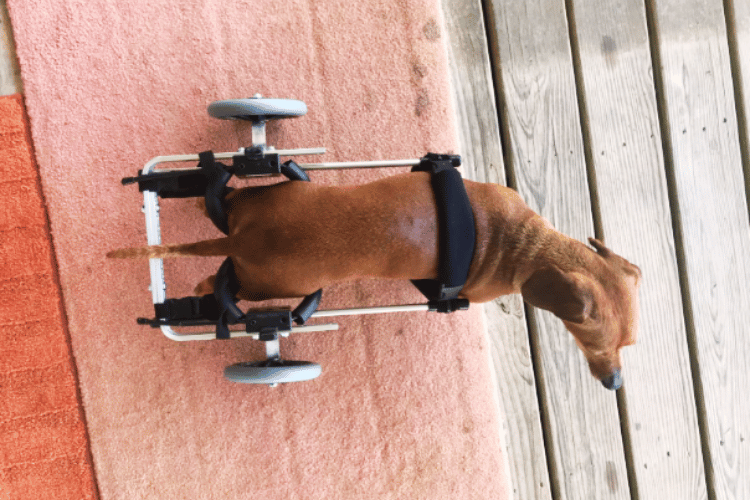
Monitoring and Adjusting Food Intake
As a dog's lifestyle changes with wheelchair use, so too might their caloric needs. It's essential for owners to monitor their pet's weight and adjust food intake accordingly. This might mean switching to a lower-calorie diet or incorporating more low-impact exercises to help a dog lie down and stand up without gaining excess weight. Regular check-ins with the vet can help track the dog's body condition and ensure that their diet is supporting their overall health and mobility. By managing their dog's nutrition and weight, owners are actively contributing to their dog's quality of life.
Enhancing Your Dog's Quality of Life
A dog's quality of life can dramatically improve with the use of a wheelchair. The newfound independence can alleviate frustration in dogs who have been struggling to move around. With the support of a Walkin' Wheels wheelchair, your dog can once again engage in outdoor activities, which is crucial for their mental and physical well-being. Regular exercise helps maintain muscle tone and can prevent further atrophy, contributing to the overall health of your dog's body.
Moreover, the social interaction that comes with being able to walk and play can significantly boost your dog's quality of life. Dogs are social creatures, and the ability to interact with other dogs and people is essential for their happiness. Wheelchair-bound dogs can continue to participate in family outings and dog park visits, ensuring they remain an active part of the community. This socialization can also have a positive effect on their emotional health, keeping their spirits high despite their physical limitations.
Encouraging Independence in Wheelchair Dogs
Encouraging independence in dogs with mobility issues is an essential aspect of their adaptation to a wheelchair. A dog's ability to walk, run, and play while in their wheelchair is a testament to the design of modern mobility aids. The Walkin' Wheels wheelchair, for example, is engineered to allow dogs to move freely and with confidence. This freedom can lead to a more active lifestyle, which is beneficial for both their physical and mental health. As dogs learn to navigate their environment with their new wheels, they often regain a sense of autonomy that may have been lost due to their mobility issues.
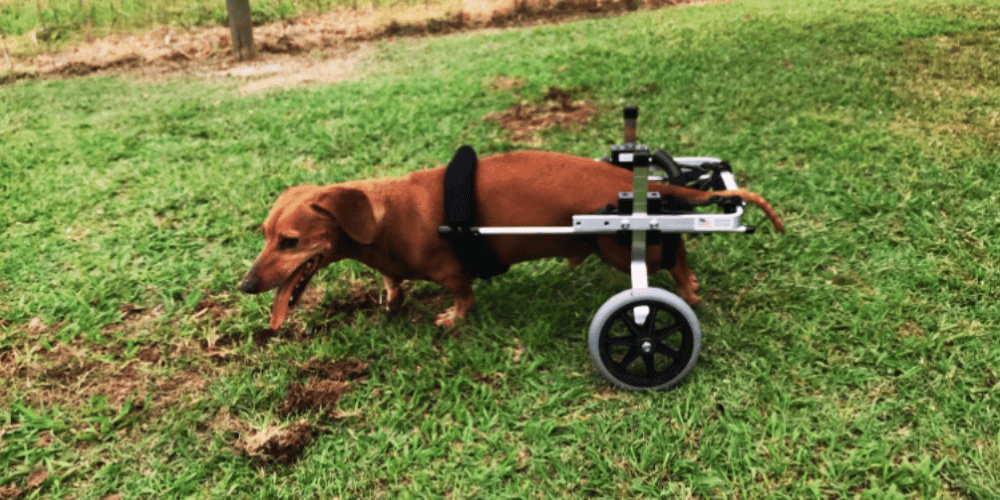
In addition to physical independence, it's important to foster a sense of psychological independence in wheelchair dogs. This can be achieved by encouraging them to engage in activities they enjoy, such as playing with toys or interacting with other pets. By doing so, pet parents can help their dogs feel less reliant on human assistance for their happiness and entertainment. This boost in morale can be instrumental in helping a dog adjust to an inactive lifestyle imposed by rear leg issues. Ultimately, a wheelchair can be a tool that not only aids in walking and potty needs but also serves as a catalyst for a more self-sufficient and joyful life for our canine companions.
The Role of Leg Strength
For dogs with some leg strength, even if the rear legs are not fully functional, a wheelchair can provide the necessary support to aid in bathroom habits. The leg rings or slings support the back legs, but they also allow for some movement, which can be beneficial for dogs that can still control their bowel movements to some extent. This support helps to maintain muscle tone and encourages an active lifestyle, which is beneficial for overall health.
Mobility Issues Beyond the Rear Legs
While most discussions about dog wheelchairs focus on the rear legs, some pets have mobility issues that affect their front legs. Wheelchair designs cater to these needs as well, with support for the front legs or a full-body harness for pets with more severe mobility problems. These wheelchairs still allow for bathroom breaks, with the design accommodating the pet's need to relieve itself comfortably.
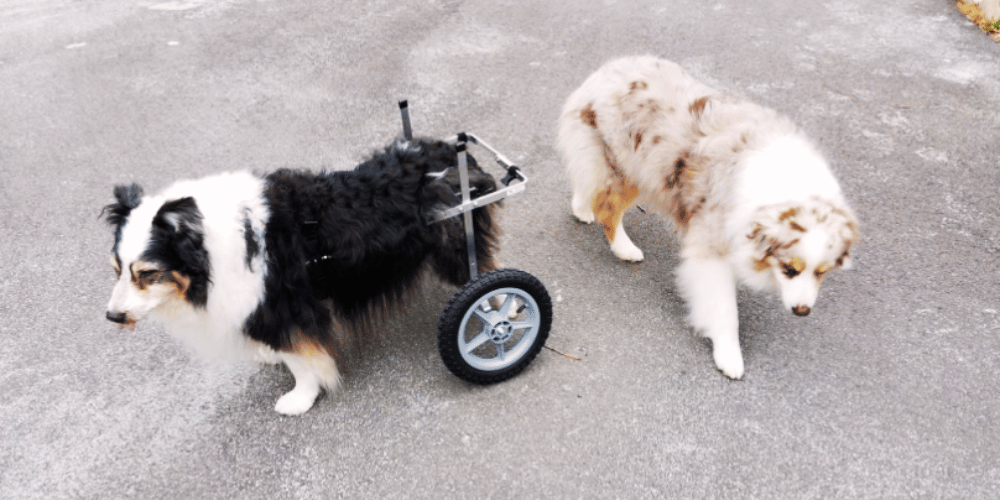
The Importance of Exercise
Exercise is crucial for all animals, and wheelchair dogs are no exception. A wheelchair allows paralyzed pets to move around, play with other dogs, and engage in activities that contribute to their physical and mental well-being. Regular movement also promotes healthy bowel movements, making it easier for dogs to go to the bathroom while in their wheelchairs.
The Vet's Role in Wheelchair Adaptation
A vet is an invaluable resource when it comes to adapting to a wheelchair. They can provide guidance on the best type of wheelchair for a dog's specific condition, such as degenerative myelopathy or other mobility issues. Vets can also offer advice on training techniques and how to encourage a paralyzed dog to use their wheelchair effectively, including going to the bathroom.
The Emotional Impact on Pet Parents
Caring for a paralyzed dog can be an emotional journey for pet parents. Witnessing their pet regain some independence through the use of a wheelchair can be a profoundly positive experience. It's important for pet parents to seek support, whether from other dog owners with similar experiences, support groups, or online communities, to share tips and encouragement.
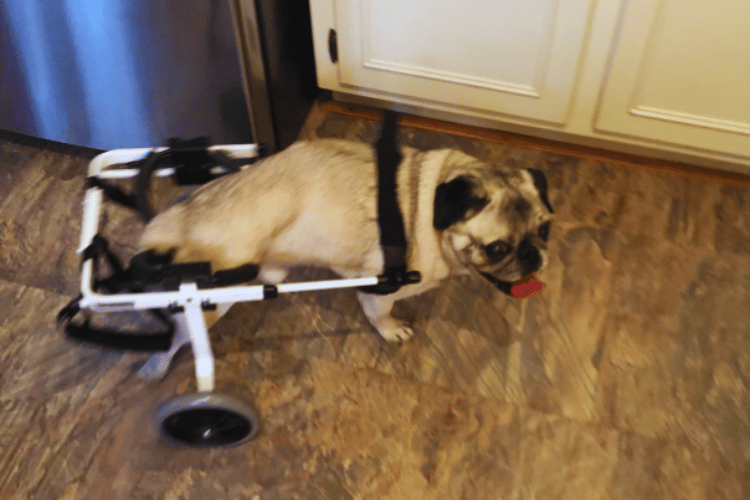
Summary
Dog wheelchairs are ingeniously designed to help pets with mobility issues lead active and fulfilling lives. They are specifically crafted to allow dogs to pee and poop without hindrance, ensuring that even a paralyzed dog can maintain hygiene and comfort. Pet parents play a crucial role in assisting their pets with bathroom breaks and adapting to the wheelchair. With the right wheelchair, training, and care, most dogs can enjoy a quality of life that may have seemed impossible after a mobility-compromising injury or illness.
FAQ Section
Q: Can dogs in wheelchairs still go for walks? A: Yes, dogs in wheelchairs can still go for walks. The wheelchair provides the support they need to move around and exercise, which is essential for their physical and mental health.
Q: How do I know if my dog's wheelchair fits correctly? A: A properly fitted wheelchair should be fully adjustable to your dog's size and shape, allowing for comfortable movement and the ability to relieve themselves without obstruction. Consult with your vet or a professional who specializes in pet mobility aids to ensure a proper fit.
Q: What should I do if my dog has trouble using the bathroom in their wheelchair? A: If your dog is having trouble, consult with your vet for advice. They may recommend specific training techniques or adjustments to the wheelchair. Additionally, some pet parents find it helpful to gently lift the back bar of the wheelchair to encourage a natural position for bathroom breaks.
Thank you for visiting LegitLists we hope this helps you make a legitimate choice!






